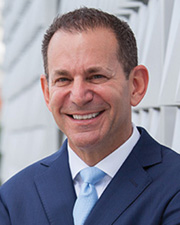
What are tenant improvements in commercial real estate? - by Ron Koenigsberg

The goal of commercial real estate ownership is to keep investment properties occupied and tenants happy. While this is not always an easy task, there are ways landlords can attract and keep tenants at their property. One way is through tenant improvements.
Tenant improvement allowances are changes a landlord makes to rental spaces as part of the lease agreement. These alterations are made to design the space to the desires of the incoming tenant. A detailed description of the permitted allowances are explained in the lease agreement.
What is Tenant Improvement Allowance (TIA)?
Landlords generally allow the tenant improvements to be used on hard costs. Hard costs are improvements that will be left behind once the tenant leaves.
Some examples of hard costs include:
- Framing & walls;
- Doors & windows;
- Paint & carpet; and
- HVAC, electric, & plumbing.
On the other hand, soft costs are typically not beneficial to the landlord, so they become the tenant’s responsibility. Soft costs include furniture, electronic equipment, and other items a tenant can take with them when vacating the property.
The allotted sum of money by the landlord is usually measured on a per-square-foot basis.
The average TIA provided for tenant improvements in the United States is around $43.00 per s/f. However, in New York, the average allowance is near $48.00 per s/f.
This increase in New York helps landlords attract tenants to buildings that are a bit older or will require significant changes to the build out.
Tenant improvement allowance does not need to be repaid by the tenant. However, any additional cost that exceeds the allocated budget, normally falls under the tenant’s responsibility to pay.
What Isn’t Covered Under Tenant Improvements (TI)?
Improvements that are not covered by the landlord include anything that only caters to the tenant’s specific needs.
Additionally, improvements that fail to provide value to the property are not covered. This includes improvements that can be removed by the tenant such as furniture, decor, electronic equipment, and more.
Trending Tenant Improvements in 2022
Since the COVID-19 pandemic began, there has been a renewed focus on improvements that make buildings more attractive for leasing.
Many of these improvements focus on creating a healthier environment for tenants, to promote a safe and comfortable-setting to conduct business in-person again.
Touch-free systems, flexible work spaces, and advanced ventilation systems are a few of the improvements trending in 2022.
These touch-free systems, specifically restroom fixtures, also conserve water and energy for landlords. Commercial buildings “going green” and chasing energy efficiency has been an increasing trend over the last few years.
Conclusion
Tenant improvements are key to attracting tenants to lease your commercial real estate.
However, there are other ways to attract tenants to your property. Consider offering rental concessions to speed up the leasing activity.
Questions on Long Island commercial real estate? Contact us today!
Ron Koenigsberg is the president of American Investment Properties, Garden City, N.Y.